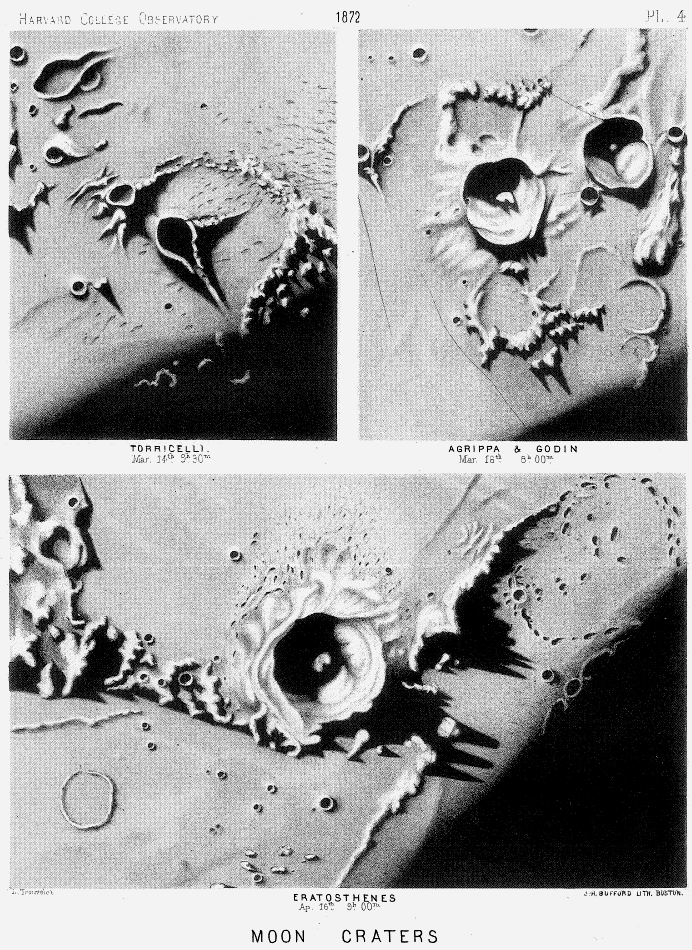
drawing by L. Trouvelot courtesy NASA Astrophysics Data System
Etienne Leopold Trouvelot was a masterful space artist of the late 1800s. His pastel drawings graced many popular science books but they also appeared in the Harvard Observatory Annals because they represented the most accurate depictions of stars, nebulae, sunspots, planets and the Moon that were obtainable in the era before photography became king. Trouvelot’s drawings had a softness that invoked the delicacy of shading of the lunar surface, but he also quite accurately inserted crisp detail such as the rilles on the edge of Tranquillitatis near Agrippa and Godin. Trouvelot was also an amateur entomologist and had the misfortune of introducing the deadly gypsy moth into the USA.
Technical Details:
The issue of the Harvard College Annals that contains Trouvelot’s drawings does not bother to mention the telescope used, but it was probably the 15″ refractor.
Related Links:
More magnificent Trouvelot drawings - requiring payment to use on LPOD - so visit their site!
Now you can support LPOD when you buy any book from Amazon thru LPOD!
COMMENTS?
Click on this icon File:PostIcon.jpg at the upper right to post a comment.



